Lin Heung Tea House – Famous Traditional Hong Kong Dim Sum House (Not Closing Down Anymore!)
One of our most memorable experiences in Hong Kong was dining at Lin Heung Tea House (蓮香樓), a traditional dim sum restaurant known for its frenetic atmosphere. Customers are expected to find their own tables and get dim sums from the roaming pushcarts. This venerable dim sum house was reportedly set to close down at the end of February 2019 because its new landlord did not renew their lease. However, it seems that they managed to renew their lease in the end, and therefore it is still in operation. This article was updated on 15 May 2019.
Lin Heung Tea House (蓮香樓)
Lin Heung Tea House (蓮香樓) is a venerable century-old Chinese restaurant located in Sheung Wan, Hong Kong. It is one of the few tea houses that still serves dim sum the traditional way. All the dim sums are prepared in advance and rolled out on metal trolleys. Customers can either wait for the pushcarts to roll past their tables or simply walk up and grab the dim sums. The atmosphere here is generally quite chaotic. And like most traditional Hong Kong eateries, customers are expected to share tables with other diners.
History of Lin Heung Tea House
The original Lin Heung Tea House was founded in Guangdong (China) in 1889.
In 1910, a Hanlin Academy member tasted the restaurant’s lotus paste and was so impressed that he suggested incorporating the “lotus” Chinese word into the restaurant’s name. And that was how Lin Heung (literally “Fragrant Lotus”) Tea House got its name.
There were also three Lin Heung Tea House branches in Hong Kong, with one of the branches (founded in 1918) located at Queen’s Road Central. Details about the other two branches are unknown.
Due to political instability after the civil war in 1950, the Guangdong entity eventually lost contact with the three Hong Kong branches.
Since then, only the branch at Queen’s Road Central has survived. It moved to its current location at Wellington Street (Central) in 1996 and is now the famous “Lin Heung Tea House” that we all know of!
I’m sorry to bore you guys with history lessons, ok now it’s time to get on with the review.
Awesome Cultural Experience in a Bustling Atmosphere
We went to Lin Heung Tea House on a Monday at around 12pm. We walked through the restaurant’s entrance and then went up a short flight of stairs.
Even though we had heard about the chaotic environment at Lin Heung Tea House before, nothing could have fully prepared us for the frenetic scene that greeted us.
The entire floor was packed to the brim with diners, and we were surrounded by the lively sounds of people talking and noises of plates and cutleries rattling.
Uniformed staff were hurrying about the restaurant refilling tea and pushing trolleys, and diners were making a beeline for the pushcarts to grab their dim sums.
There was no one to guide us to a table and by the looks of it, all the tables were occupied anyways.
Raevian and I retreated to a safe corner where I told her to stay put while I ventured out to fight for our survival find a table.
After jostling around the packed restaurant for a while, I gave up and returned to find Raevian. She was gone! Had she been consumed by Lin Heung Tea House?
Looking around, I saw that a server had kindly led her to a table where there happened to be two empty seats. I hurriedly followed her to the table, which consisted of a group of elderly locals and two other Japanese tourists.
Delicious Jasmine Tea
Once seated, we were given a tea menu and we ordered Jasmine Tea (~HKD20). After that, we were each given two teacups, one big and one small. After observing the veteran patrons beside us, we learnt that the big teacup is used for steeping the tea, which is then poured into the smaller teacup.
If you want to refill the tea, simply flip the lid of the larger teacup upside down. The staff make their rounds regularly and will soon come by to refill the cup with hot water using an old school water kettle.
Steeping the tea required some skill. First, I used the lid to stir the tea leaves and then let it soak for a while. After that (and this was the most difficult part), I parted the lid just a little and held it over the small teacup at a 45 degree angle to pour out the tea. The trick was to ensure that the gap was small enough to filter out the tea leaves.
My first few attempts resulted in the tea spilling all around the small teacup and forming a small tea puddle. And because the gap was too large, a large amount of tea leaves went into the teacup as well. I could sense the surrounding patrons totally judging me.
Nonetheless, the tea was really delicious. It had a rich tea fragrance and was not bitter at all. After drinking, it left a very pleasant tea aftertaste (“hui gan”) in my mouth.
While drinking the tea, I suddenly noticed that one elderly patron across the table was looking at me with a stoic expression. Amusingly, he actually started demonstrating to me how to pour tea. With a few deft movements, he poured his tea gracefully into his teacup.
“Easy“, he looked at me and muttered in English, before looking down to continue enjoying his tea and dim sum.
I was both embarrassed and amused, but there was no time to dwell on emotions because I had to go out and grab some dim sums from the pushcarts.
Getting Dim Sums from Pushcarts
Taking the “tally card” we had been given earlier, I ventured out to get the dim sums. I spotted an old lady server pushing a trolley and quickly rushed over, where I was promptly joined by several other jostling customers.
I gave the server my tally card and she chopped a stamp on it before passing me a basket of dim sum.
I did it! I had gotten my first dim sum dish!
I extracted myself from the crowd and returned to the table triumphantly with my trophy, giving Raevian a proud look of achievement.
She looked at me and I eagerly waited for her compliments. Her first words were, “Erm, what is this?”
“Hmm. I’m not really sure. I was just grabbing what I could”, I replied sheepishly.
Beef Tendon
Afterwards, I realised that my hard-fought dim sum was actually Beef Tendon (~HKD20), paired with Daikon and Shiitake Mushroom. This is a classic Cantonese dish. The stewed tendon was mostly bone, but it did have a bit of flesh and fat which tasted decent when eaten with the savoury sauce. I actually enjoyed the sweet and slightly crunchy daikon (winter radish) more. The soft and savoury shiitake mushroom was a treat as well.
BBQ Pork Bun
By now I was pretty much an expert at getting the dim sums. I went to get the BBQ Pork Bun (~HKD20) next. The bun was warm and fluffy, and the char siu had a sweet savoury flavour. Overall it tasted decent.
BBQ Pork Rice Roll
Finally, we had the classic BBQ Pork Rice Roll (~HKD20). At the pushcart, I asked for a beef rice roll before changing my mind and requested for a pork rice roll instead. I fully expected to be admonished by the pushcart lady but she simply nodded her head and exchanged the dish for me.
The rice roll definitely passed muster. It had a nice smooth texture and the char siu was quite tasty. Together with the savoury sauce, this was one decent dim sum dish.
Signature Dim Sum Dishes
If you are unsure of what to order, you can refer to Lin Heung Tea House’s signature items below:
- Steamed Chicken Bun
- Shumai Made with Tripe
- Shumai Made with Liver
- Steamed Chinese Sausage Roll
- Lotus Seed Paste Bun
- Steamed Chinese Sponge Cake
- Steamed Chicken Wrapped with Bean Curd (腐皮卷)
- Steamed Pork Meatball with Quail’s Egg
Bidding Farewell To Lin Heung Tea House
Sadly, this venerable establishment may be facing closure soon. This is because the building’s new landlord, CSI Properties, may not be renewing Lin Heung Tea House’s lease. The lease is set to expire in the second quarter of 2019. It has been rumoured that CSI Properties plans to redevelop the entire building.
Update 12 February 2019: according to Hong Kong media reports, this old school dim sum restaurant will be closing at the end of this month after CSI Properties failed to renew its lease. The restaurant had its final staff CNY dinner last week.
Update 10 March 2019: it seems the restaurant managed to renew its lease, and therefore is currently still in operation.
Other Lin Heung Branches
However, the good news is that there are actually two other Lin Heung branches! Owned by the “Hong Kong Lotus Fragrance Group”, the two other branches are Lin Heung Kui 蓮香居 (a 2018 Michelin Bib Gourmand restaurant located at 50 Des Voeux Rd, Sheung Wan) and the newly open Lin Heung Tea House 蓮香棧 (located in Luk Yeung Galleria).
Conclusion
On the whole, we enjoyed our meal at Lin Heung Tea House. It was a great cultural experience to dine in an authentic Hong Kong tea house. The dim sum was not fantastic but it was definitely decent. And even though the atmosphere was quite chaotic, the staff were generally quite helpful and patient. We didn’t experience any rudeness at all. I highly recommend any foodie visiting Hong Kong to check out Lin Heung, especially since it may be closing down soon.
Lin Heung Tea House 蓮香樓
What to Order: Tea, Steamed Chicken Wrapped with Bean Curd (腐皮卷), Lotus Seed Paste Bun, Rice Roll, BBQ Pork Bun. (around HKD20 each)
Address: 162 Wellington St, Sheung Wan, Hong Kong
Directions: Five-minute walk from Sheung Wan Station Exit E2
Opening Hours: Daily 6am to 11pm (closed between 4.30pm and 5.30pm)
Phone: +852 2544 4556
Other Branches
Sheung Wan: Lin Heung Kui 蓮香居 (Michelin Bib Gourmand Restaurant 2018), 40-50 Des Voeux Rd, Sheung Wan
Tsuen Wan: Lin Heung Tea House 蓮香棧, Shop P9, Luk Yeung Galleria, Wai Tsuen Rd, Tsuen Wan

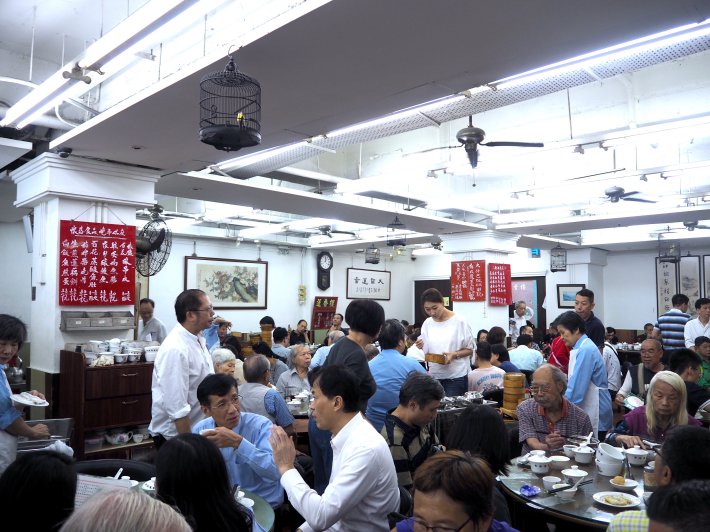
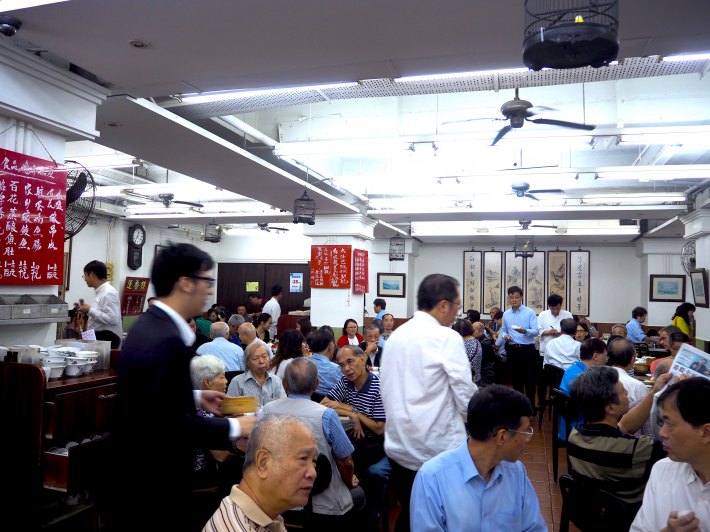
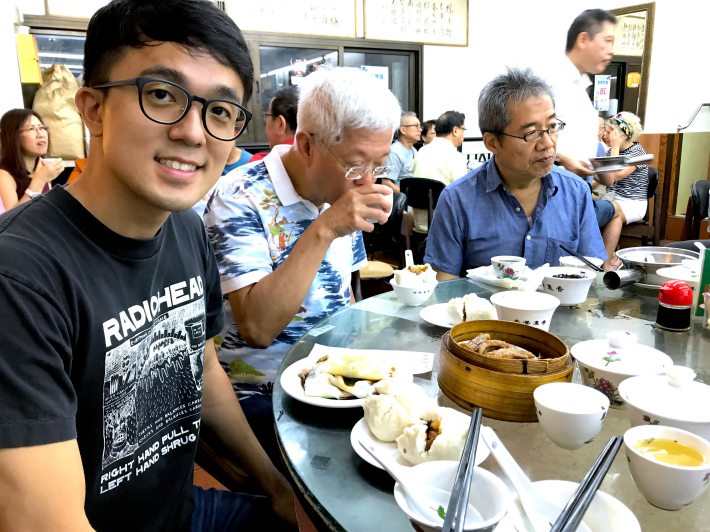
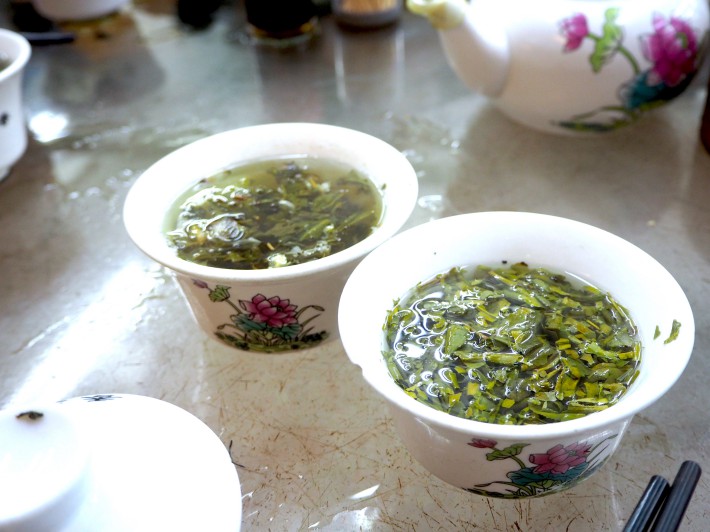
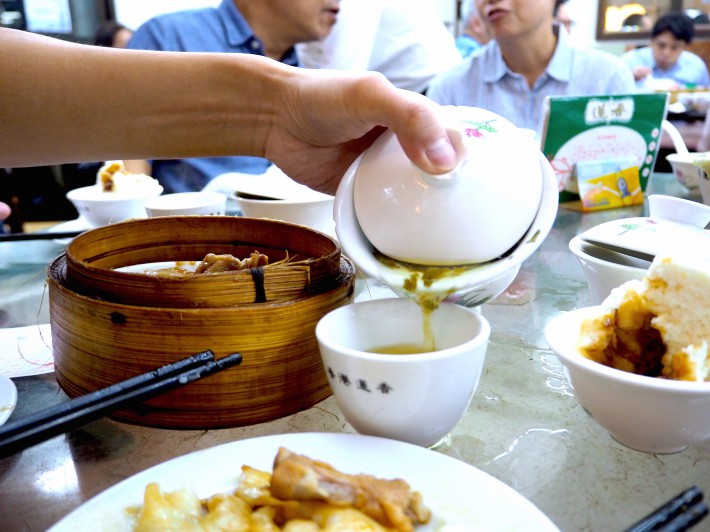
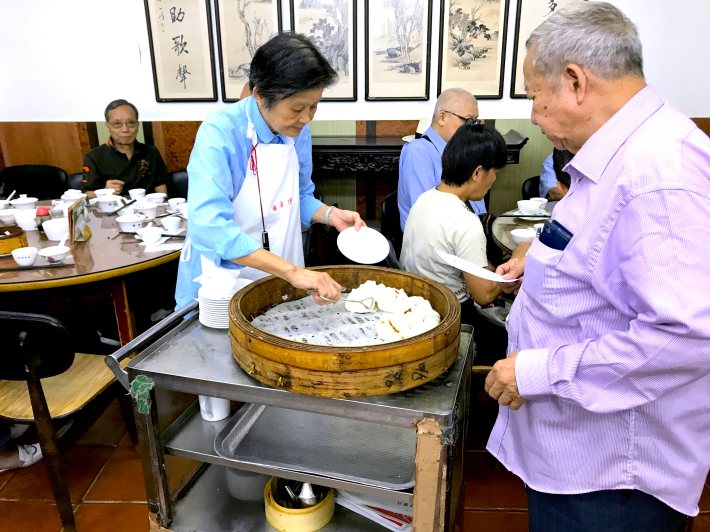
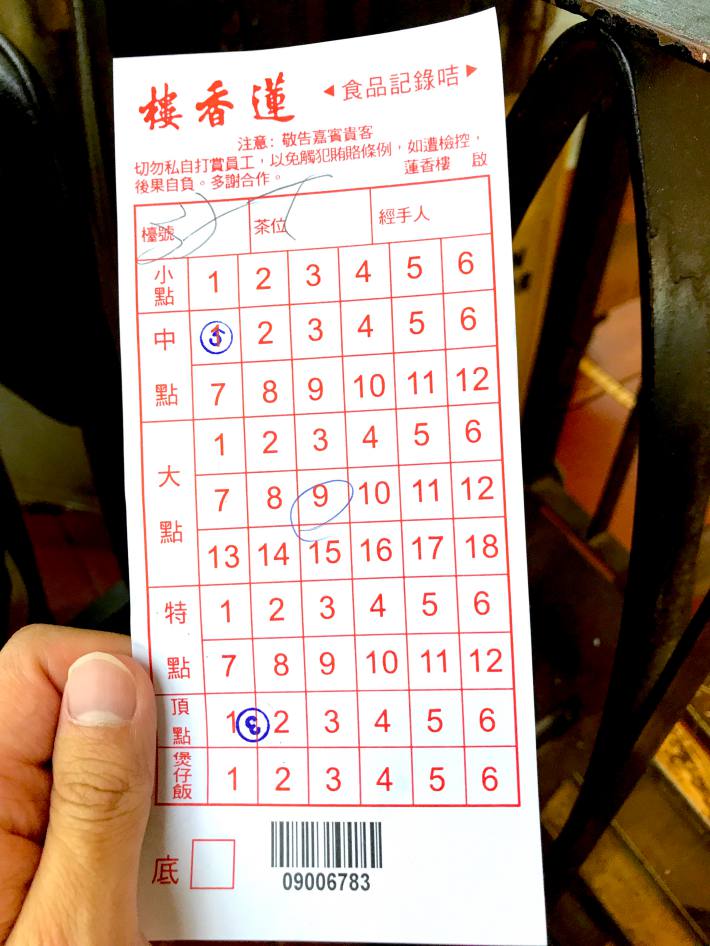
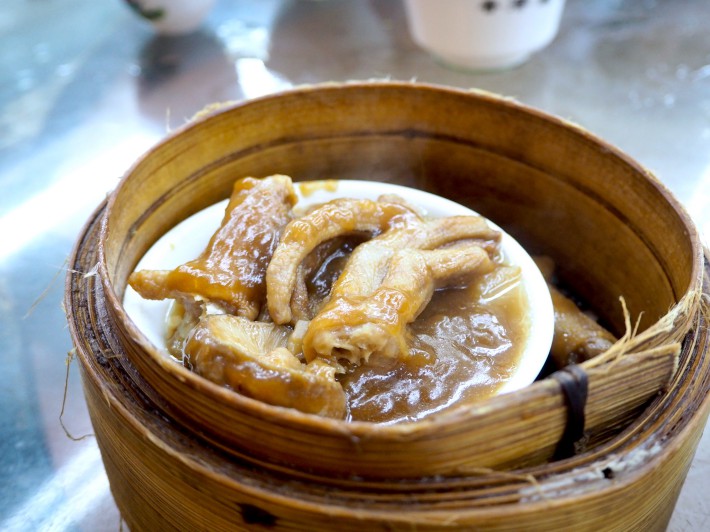
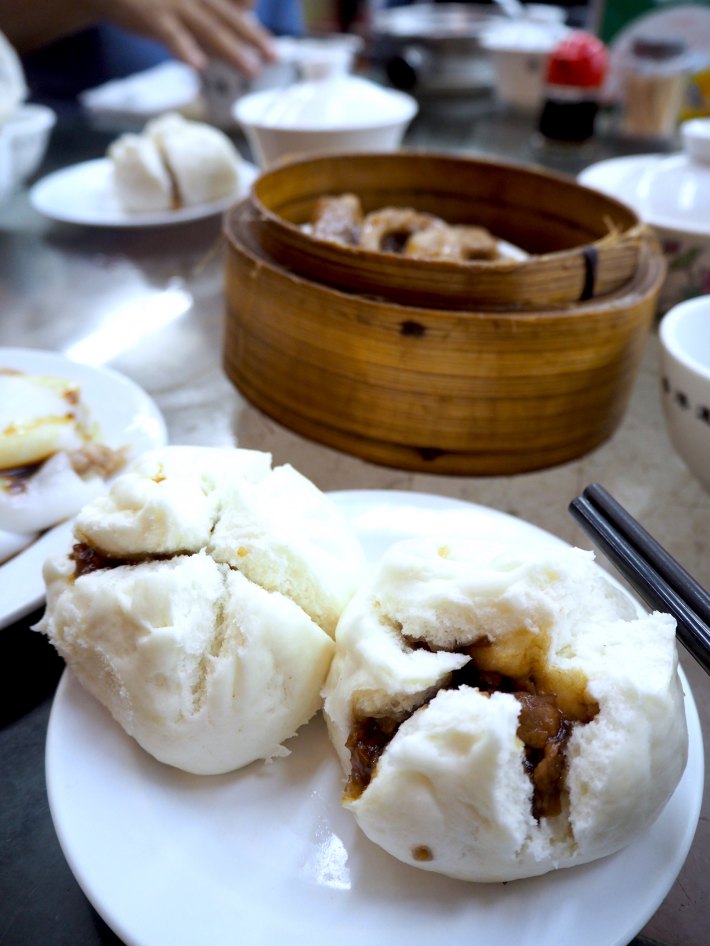
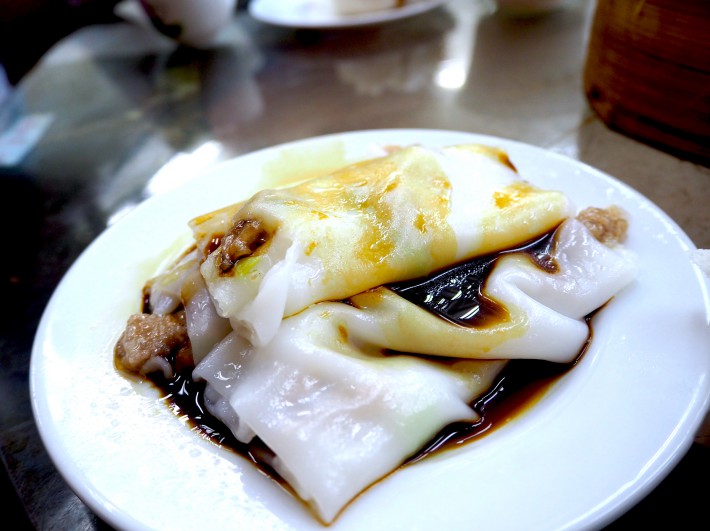
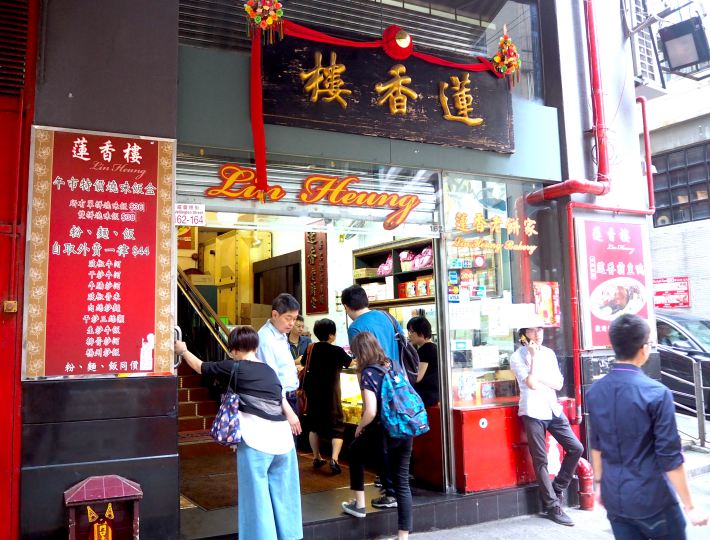
2 Comments and Questions
It’s great to know of this establishment. I will remember this for my next visit to Hong Kong. The prices seems very very reasonable even though it is not Tim Ho Wan quality.
Hi Mike! Yes it was a great cultural experience and the dim sums were decent.